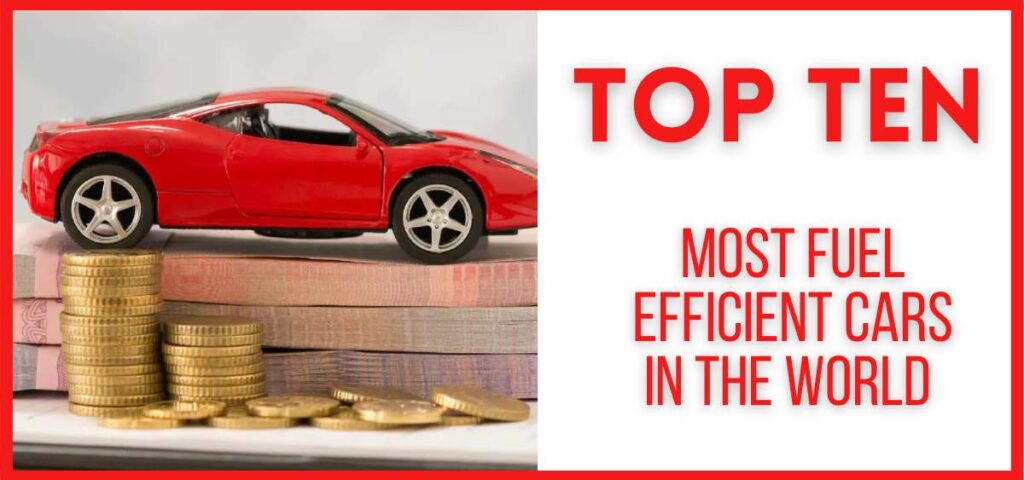Fuel-efficient cars are no longer simply a niche category; they’re becoming the new standard. As environmental concerns rise and fuel costs fluctuate, car manufacturers are fiercely competing to develop ever-more efficient vehicles. Gone are the days of sacrificing style and performance for eco-friendliness. Today’s fuel-efficient cars boast sleek designs, cutting-edge technology, and impressive driving dynamics, all while offering significant savings at the pump.
This shift isn’t just driven by consumer demand, but also by stricter regulations and a global focus on sustainability. The automotive industry is rapidly transforming, with hybrid and electric vehicles taking center stage. In this article, we’ll delve into the top 10 fuel-efficient cars of 2025, exploring the innovative features and impressive efficiency ratings that are redefining the way we drive.
Also, read: Top 10 Sustainable Aviation Fuel Options
Fuel-Efficiency Revolution: Top 10 Cars that Redefine Eco-Friendly Driving in 2025
As gas prices climb and environmental consciousness grows, fuel-efficient cars are becoming increasingly important. For drivers seeking to reduce their carbon footprint and save money at the pump, navigating the ever-evolving automotive landscape can be a challenge. This list explores the top 10 most fuel-efficient cars in the world for 2025, showcasing the cutting-edge technology and innovation pushing the boundaries of fuel efficiency. From fully electric vehicles boasting impressive ranges to cunning plug-in hybrids that combine electric power with traditional gasoline engines, these fuel-efficient cars offer drivers a path toward a greener and more economical future.
1. Hyundai IONIQ Electric
- Engine: Electric motor
- Number of Gears: Single-speed reduction gear
- Maximum Power: Up to 225 kW (302 hp) for AWD models, 168 kW (225 hp) for RWD models
- Maximum Torque: 350 Nm for all models
- Ground Clearance: 153 mm
- Kerb Weight: 1,685 kg (AWD), 1,680 kg (RWD)
- Boot Space: 584 liters
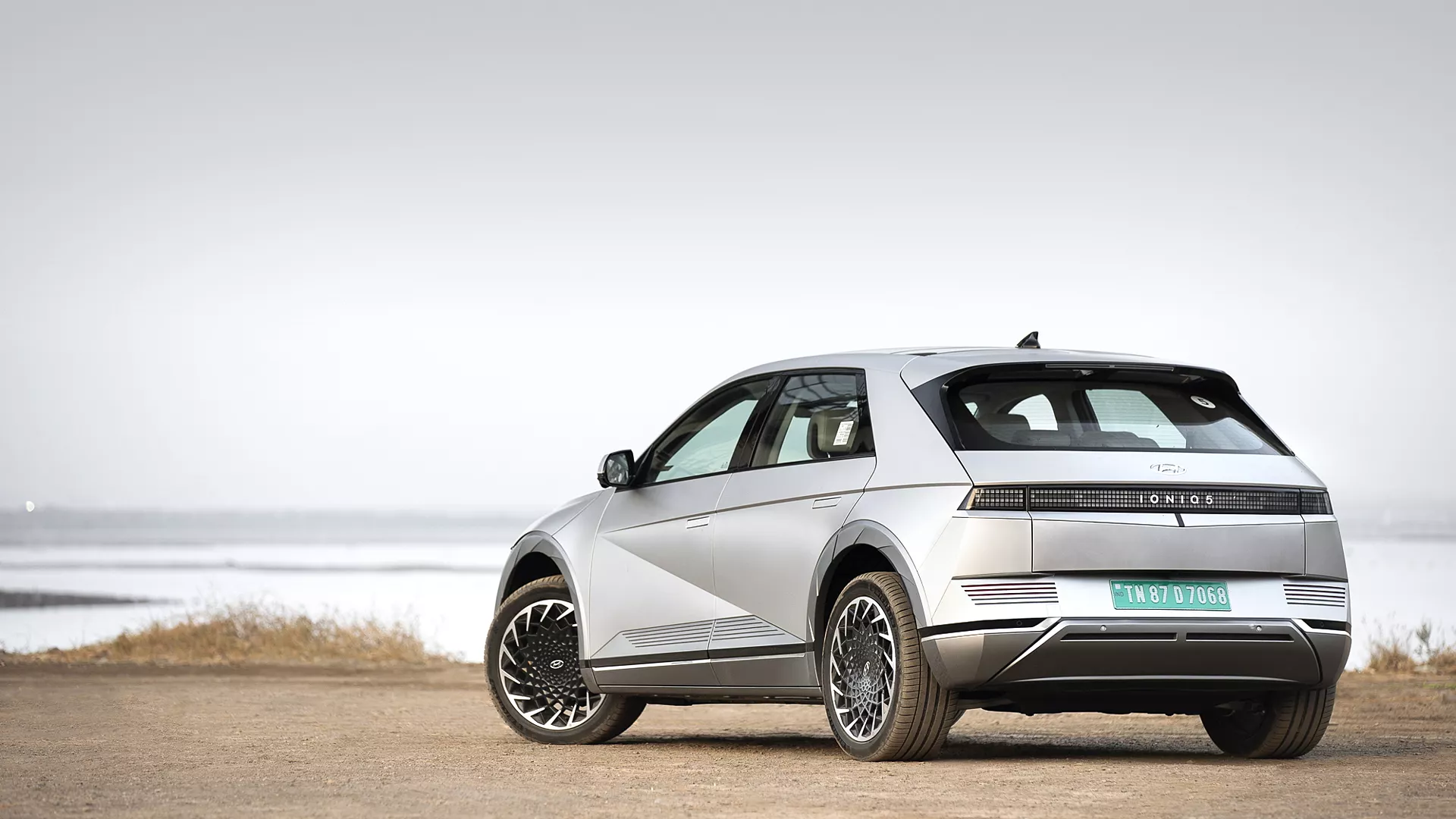
The Hyundai IONIQ Electric is a frontrunner in the fuel-efficient car race, offering an impressive EPA-estimated range of up to 303 miles on a single charge. This translates to significant savings on gas costs and reduced environmental impact. Beyond efficiency, the IONIQ Electric boasts a stylish and spacious interior with ample legroom and cargo space. Performance isn’t sacrificed either, with the IONIQ Electric offering quick acceleration and a smooth driving experience. If you’re looking for a car that seamlessly blends eco-friendliness with practicality and a touch of excitement, the Hyundai IONIQ Electric is a compelling choice under the list of most fuel-efficient cars in the world.
Also, read: Top 10 Myths About Electric Cars
2. Chevrolet Bolt EV
- Engine: Electric motor
- Number of Gears: Single-speed reduction gear
- Maximum Power: 200 horsepower (150 kW)
- Maximum Torque: 266 lb-ft (360 Nm)
- Ground Clearance: 150 mm
- Kerb Weight: 1,509 kg (3,332 lbs)
- Boot Space: 479 liters (17 cubic feet)
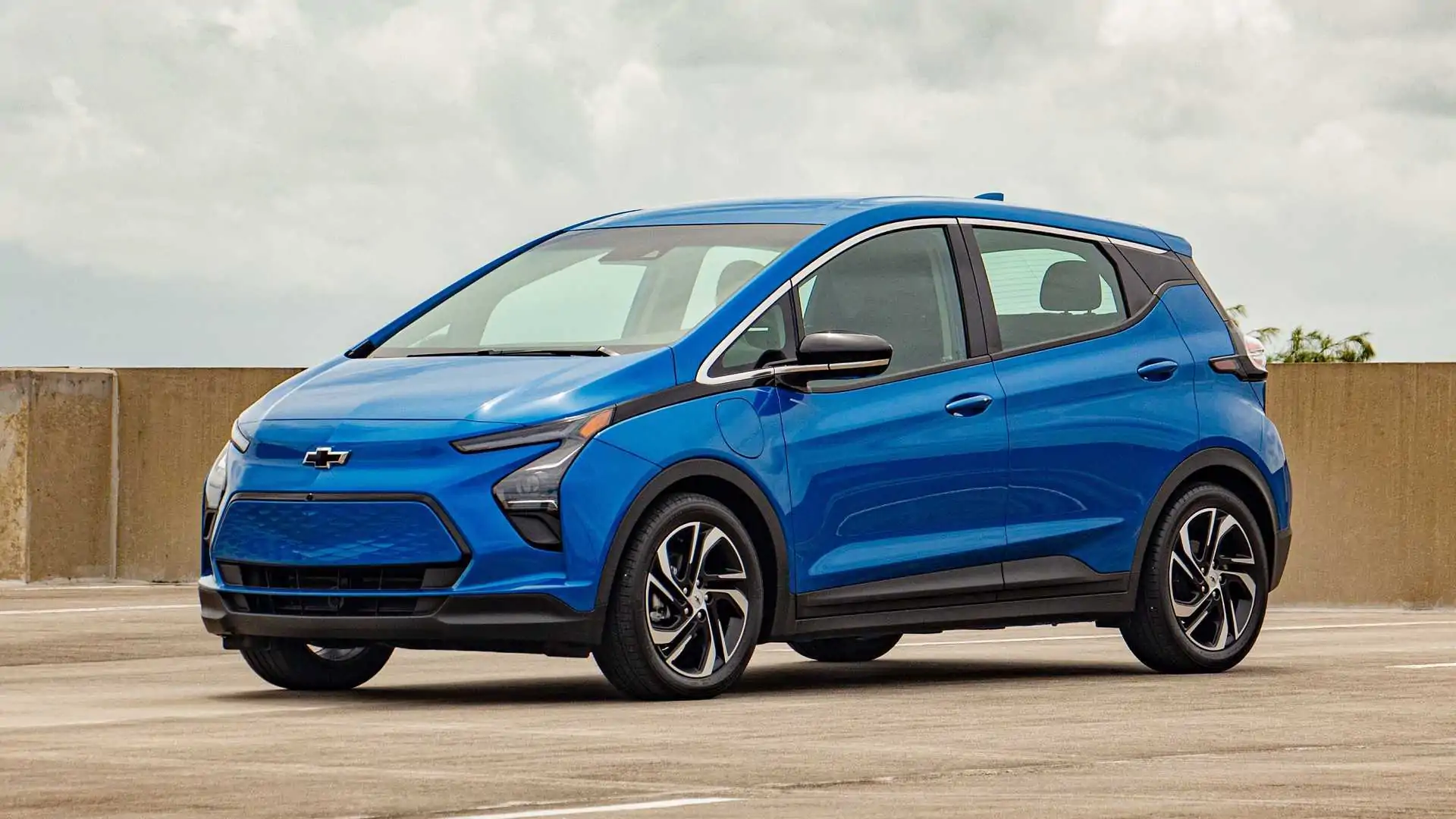
A champion of affordability in the electric vehicle market, the Chevrolet Bolt EV offers a compelling combination of practicality, efficiency, and fun. With an EPA-estimated range of 259 miles, the Bolt EV allows for worry-free commutes and even supports longer road trips. Despite its hatchback design, the Bolt EV boasts a surprisingly spacious interior with ample cargo space for everyday needs. The electric motor provides punchy acceleration and a smooth, quiet ride quality. Plus, the Bolt EV is equipped with a variety of standard features and driver-assistance technologies, making it a well-rounded choice for eco-conscious drivers on a budget.
Also, read: Top 10 Emerging Technologies for Autonomous Cars in 2025
3. Tesla Model 3
- Engine: Electric motor
- Number of Gears: Single-speed reduction gear
- Maximum Power: 283 hp (Rear-Wheel Drive), 450 hp (Performance AWD), 351 hp (long-range AWD)
- Maximum Torque: 283 lb-ft (RWD), 480 lb-ft (Performance AWD), 326 lb-ft (Long Range AWD)
- Ground Clearance: 5.4 inches
- Kerb Weight: 4,030 lbs (RWD), 4,259 lbs (Performance AWD), 4,241 lbs (Long Range AWD)
- Boot Space: 15 cu ft (rear seats up), 42.7 cu ft (rear seats folded)
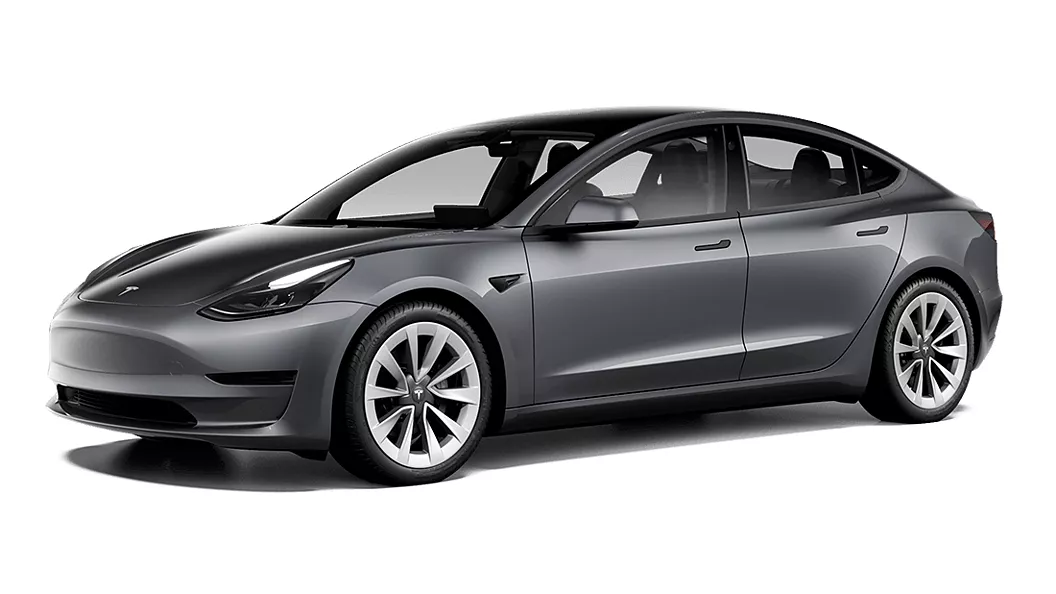
Tesla’s Model 3 continues to be a game-changer in the electric vehicle market, offering a compelling blend of efficiency, performance, and technology. With an estimated range of 272 miles for the base rear-wheel drive model and reaching up to 341 miles for the long-range AWD variant, the Model 3 tackles range anxiety for many drivers. Tesla is known for its signature acceleration, and the Model 3 doesn’t disappoint. The Performance trim rockets from 0 to 60 mph in a blistering 3.1 seconds, while all models offer a smooth and responsive driving experience. The minimalist interior design is centered around a large touchscreen that controls most vehicle functions. While some may find this unconventional, it offers a sleek and futuristic feel. As a total package, the Tesla Model 3 is a strong contender for those seeking an electric car that prioritizes both efficiency and a thrilling driving experience.
Also, read: Top 10 Advancements in Electric Vehicle Charging Infrastructure in 2025
4. Nissan Leaf Plus
- Engine: Electric motor
- Number of Gears: Single-speed reduction gear
- Maximum Power: 160 kW (214 hp)
- Maximum Torque: 340 Nm
- Ground Clearance: 140 mm
- Kerb Weight: 1,685 kg
- Boot Space: 380 liters
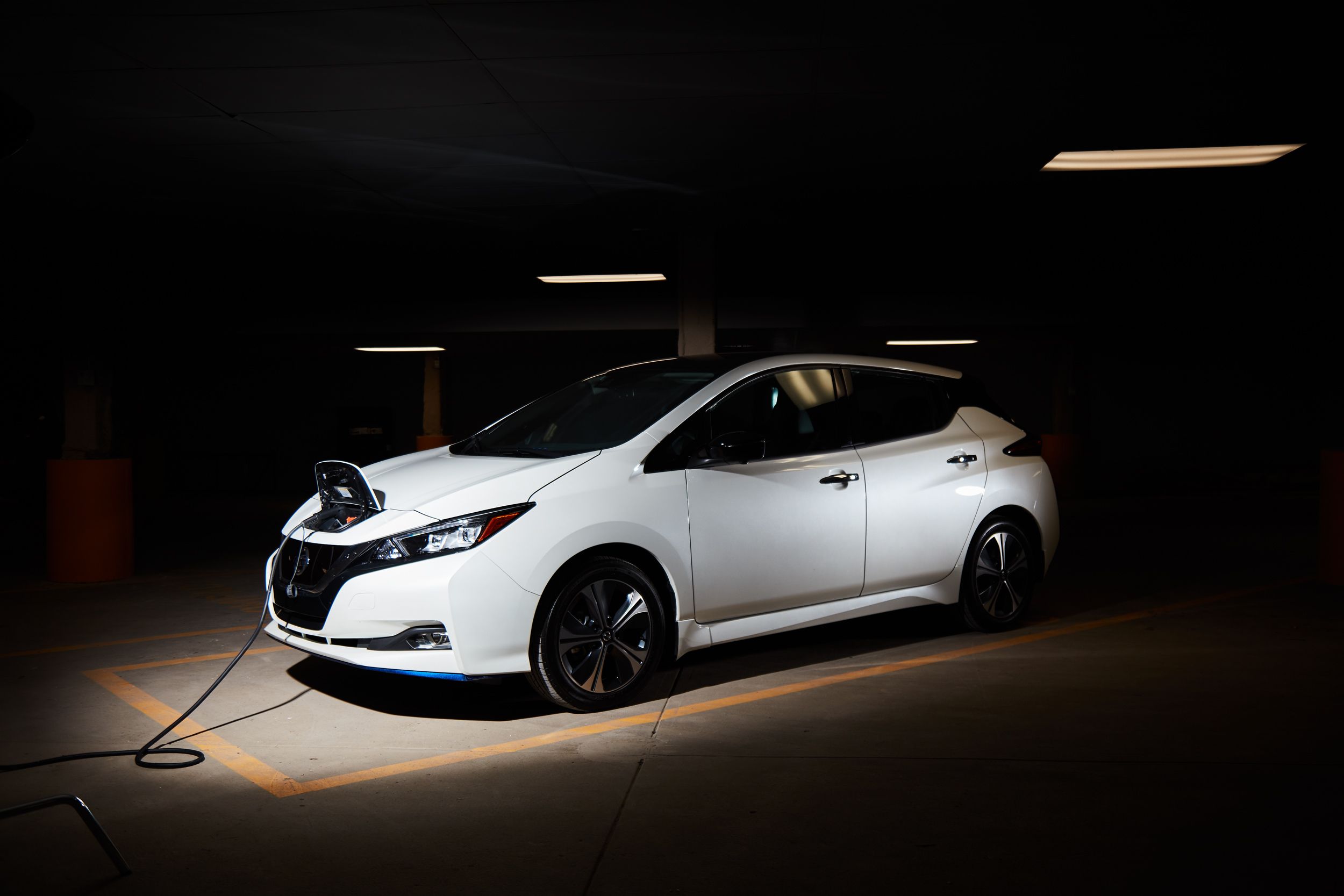
The Nissan Leaf Plus strikes a remarkable balance between affordability and driving range in the world of electric vehicles. Boasting an EPA-estimated range of up to 223 miles, the Leaf Plus allows for comfortable commutes and even some weekend getaways without range anxiety. When it comes to charging, the Leaf Plus offers both standard and quick-charge options, providing flexibility for on-the-go energy replenishment. Inside, the Leaf Plus features a surprisingly spacious cabin with comfortable seating and a user-friendly infotainment system. Safety features are also top-notch, making the Leaf Plus a well-rounded option for eco-conscious drivers seeking both value and practicality.
Also, read: Top 10 Electric Vehicle Technologies
5. BMW i3
- Engine cc: (Electric motor with optional range extender engine, 650 cc)
- Number of Gears: Single-speed automatic transmission
- Maximum Power: Electric motor: 170 kW (225 hp) or 150 kW (201 hp); Range extender engine: 38 kW (51 hp)
- Maximum Torque: Electric motor: 269 lb-ft; Range extender engine: 76 lb-ft
- Ground Clearance: 140 mm
- Kerb Weight: 1,195 kg (BEV), 1,260 kg (REX)
- Boot Space: 260 liters (seats up), 1,100 liters (seats folded)
- Fuel Tank Capacity: 42 liters (REX models only)
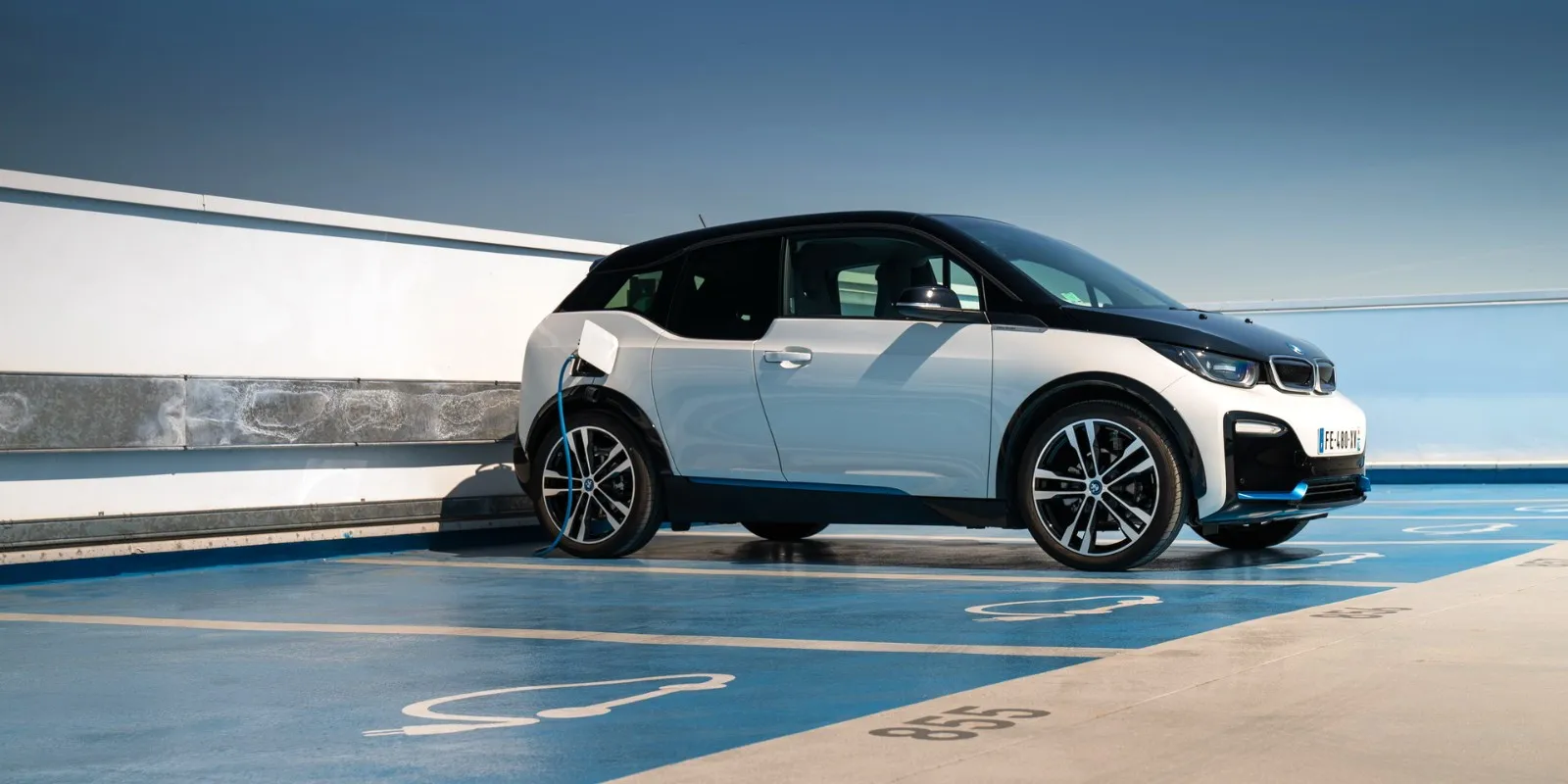
The BMW i3 stands out as a unique option in the world of fuel-efficient cars. This quirky electric hatchback boasts a recognizable design with carbon fiber-reinforced plastic panels for lightweight and eco-conscious construction. While the all-electric models offer an impressive 153-mile range, those seeking extended journeys can opt for the Range Extender (REX) model. The REX features a small gasoline engine that acts as a generator to top up the battery, providing additional peace of mind for longer trips. Despite its compact size, the BMW i3 offers a surprisingly spacious interior with premium materials and a focus on comfort. With its blend of futuristic design, innovative technology, and impressive efficiency, the BMW i3 is a compelling choice for urban drivers seeking a stylish and sustainable driving experience.
Also, read: Top 10 Warning Signs Your Electric Vehicle Needs Service
6. Mini Cooper SE
- Engine: Electric motor
- Number of Gears: Single-speed reduction gear
- Maximum Power: 135 kW (181 hp)
- Maximum Torque: 270 Nm
- Ground Clearance: 140 mm
- Kerb Weight: 1,365 kg
- Boot Space: 211 liters (seats up), 731 liters (seats folded)
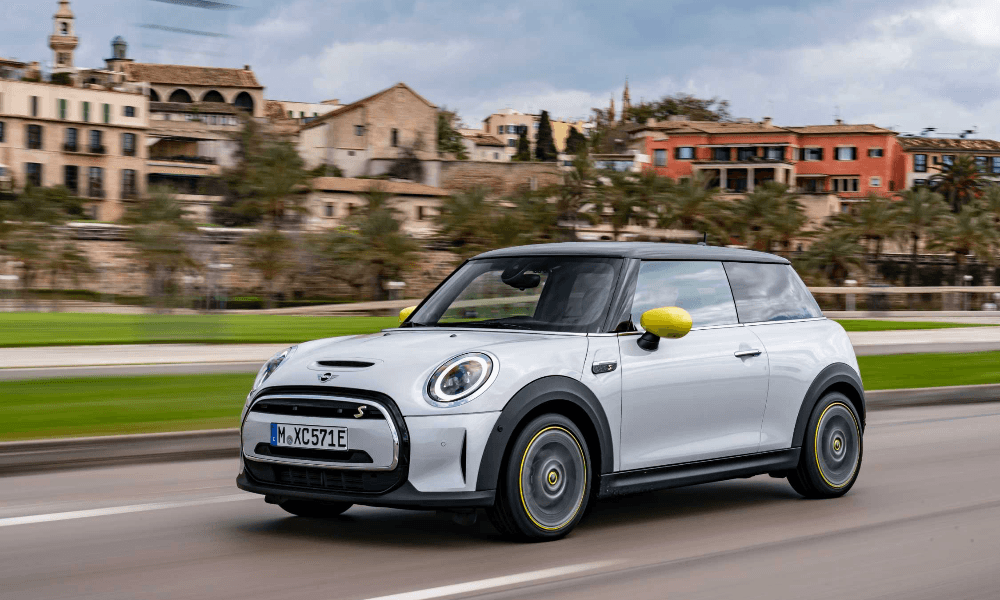
The iconic Mini Cooper gets a thrilling electric makeover with the Mini Cooper SE. Don’t be fooled by its pint-sized stature; the Mini Cooper SE packs a punch with a zippy electric motor, delivering a peppy driving experience that stays true to the Mini Cooper’s legacy. This electric MINI boasts an EPA-estimated range of up to 114 miles, making it perfect for city commutes and weekend errands. While the cargo space might be a bit snug for extensive road trips, the Mini Cooper SE’s maneuverability and playful spirit make it a joy to navigate through city streets. Plus, with its stylish design and the thrill of electric driving, the Mini Cooper SE proves that being eco-friendly can also be equal parts fun and fashionable.
Also, read: Top 10 Tips for Extending Your Electric Vehicle’s Battery Life
7. Toyota Prius Prime
- Engine: 1.8L I4 Atkinson cycle (gasoline)
- Number of Gears: Electronically-controlled Continuously Variable Transmission (CVT)
- Maximum Power: 122 hp (gas engine), 200 hp (combined electric and gas)
- Maximum Torque: 105 lb-ft (gas engine), combined system torque is not available
- Ground Clearance: 153 mm
- Kerb Weight: 1,537 kg
- Boot Space: 696 liters (seats up), 1950 liters (seats folded)
- Fuel Tank Capacity: 43 liters
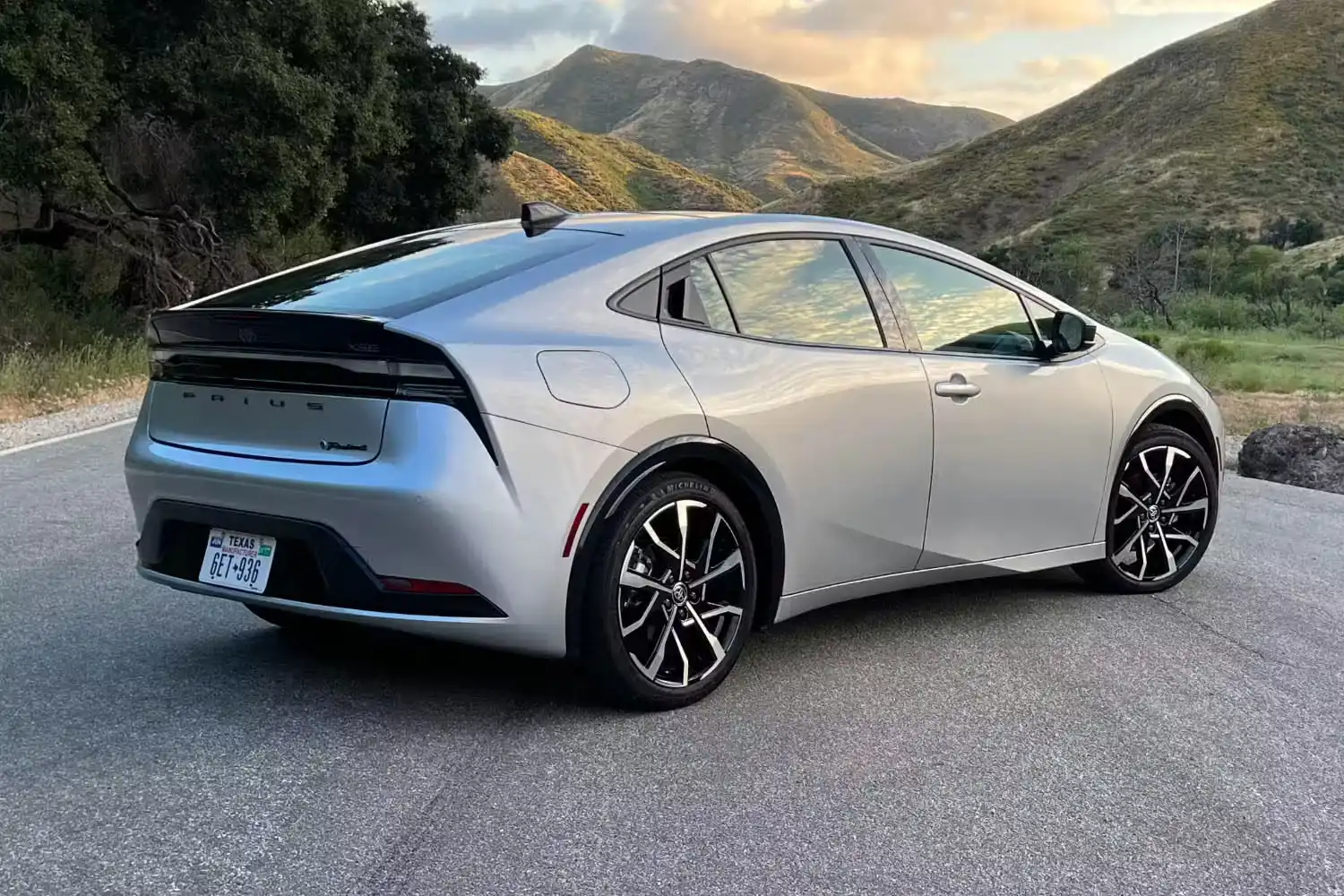
The Toyota Prius Prime, a pioneer in the hybrid car segment, remains a top contender for fuel efficiency in 2025. This plug-in hybrid offers an EPA-estimated combined fuel economy of 54 mpg and an electric driving range of up to 25 miles. When the battery runs low, the Prius Prime seamlessly switches to its gasoline engine, ensuring you can complete your journey without range anxiety. The Prius Prime also boasts a reputation for reliability and a spacious interior, making it a practical choice for everyday driving. While acceleration might not be neck-breaking, the Prius Prime offers a comfortable and quiet ride. If you’re looking for a fuel-efficient and dependable car with a proven track record, the Toyota Prius Prime is a strong option to consider.
Also, read: Top 10 Myths About Electric Vehicle Maintenance Busted
8. Kia Niro PHEV
- Engine cc (Displacement): 1.6L I4 Atkinson Cycle
- Number of Gears: 6-speed dual-clutch automatic transmission (DCT)
- Maximum Power: Combined system output of 148 horsepower (electric motor + gasoline engine)
- Maximum Torque: Electric motor: 169 lb-ft, Gasoline engine: 103 lb-ft
- Ground Clearance: 150 mm
- Kerb Weight: 1,653 kg
- Boot Space: 613 liters (seats up), 1401 liters (seats folded)
- Fuel Tank Capacity: 38 liters
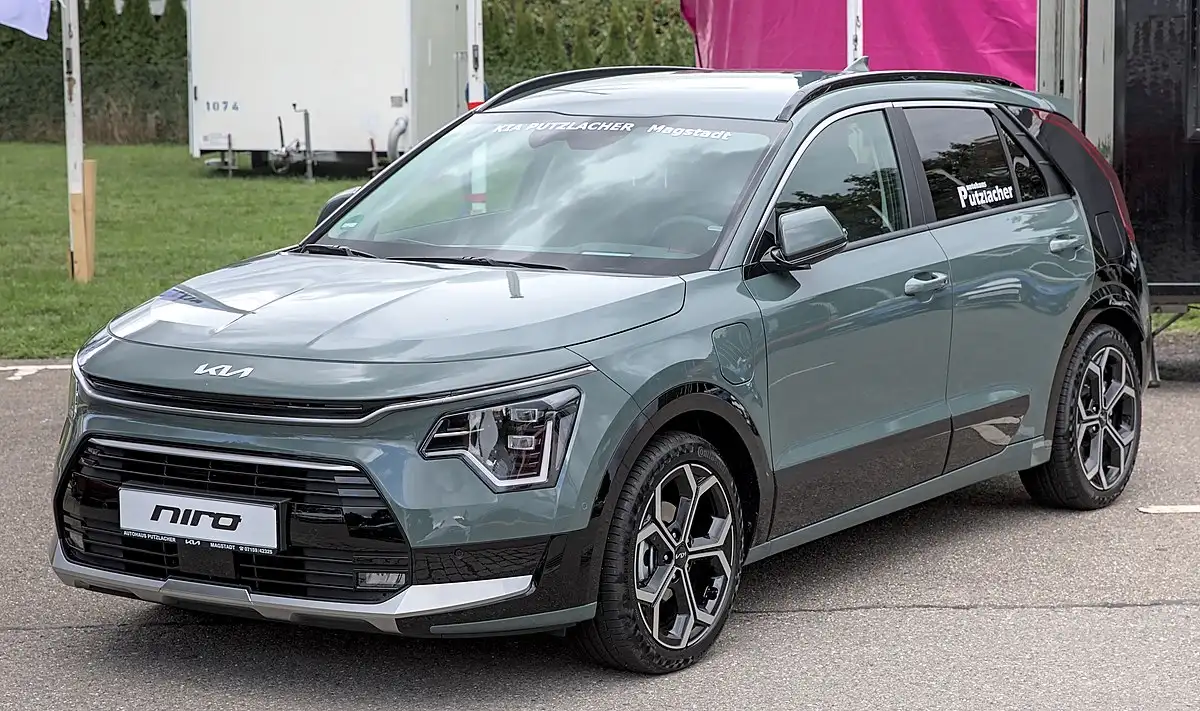
The Kia Niro PHEV strikes a perfect balance between electric efficiency and gasoline practicality. This plug-in hybrid offers an EPA-estimated combined fuel economy of 50 mpg and an electric driving range of 25 miles, allowing for short commutes and errands on electric power alone. For longer trips, the gasoline engine seamlessly kicks in, ensuring you never have to worry about range anxiety. The Niro PHEV also boasts a spacious interior with plenty of cargo space, making it a versatile choice for families or those with active lifestyles. With its blend of impressive fuel economy, functionality, and attractive design, the Kia Niro PHEV is a top contender for drivers seeking an eco-conscious and practical car.
9. Ford Escape Hybrid
- Engine cc (Displacement): 2.5L I-4 Atkinson Cycle Engine
- Number of Gears: Continuously Variable Transmission (CVT)
- Maximum Power: 200 hp combined (electric motor + gasoline engine)
- Maximum Torque: N/A
- Ground Clearance: 180 mm
- Kerb Weight: 1,680 kg
- Boot Space: 863 liters (seats folded), 344 liters (seats upright)
- Fuel Tank Capacity: 54 liters
- Engine Type: Hybrid Electric (Electric motor + Gasoline engine)
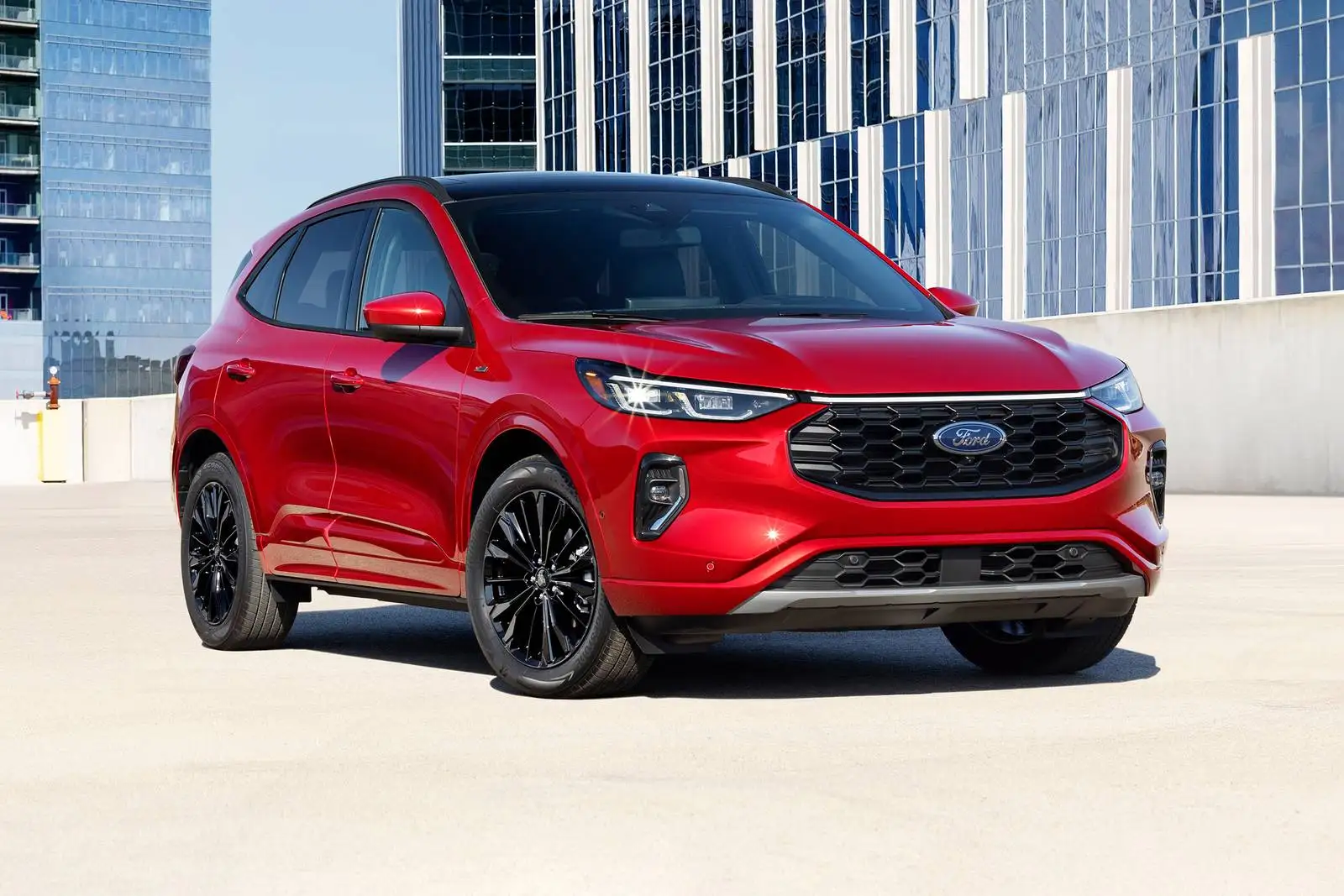
The Ford Escape Hybrid strikes a perfect balance between functionality, efficiency, and a touch of adventure. This SUV boasts an EPA-estimated combined fuel economy of up to 44 mpg, making it a wallet-friendly choice for everyday driving and weekend getaways. The Escape Hybrid offers a spacious interior with ample cargo space, making it perfect for hauling gear or passengers. You won’t sacrifice performance either, as the hybrid powertrain delivers a smooth and responsive driving experience. With its combination of practicality, fuel efficiency, and all-weather capability, the Ford Escape Hybrid is a compelling option for drivers seeking an eco-conscious SUV that doesn’t compromise on capability.
Also, read: Ten Signs That Your Car’s Battery is Dying
10. Toyota Corolla Hybrid
- Engine cc (Displacement): 1.8L I4 Atkinson cycle + Electric motor
- Number of Gears: Electronically-controlled Continuously Variable Transmission (CVT)
- Maximum Power: 138 horsepower (combined system)
- Maximum Torque: N/A (electric motor torque not specified)
- Ground Clearance: 150 mm
- Kerb Weight: 1,405 kg (LE FWD) – 1,470 kg (XLE AWD)
- Boot Space: 413 liters
- Fuel Tank Capacity: 41 liters
- Engine Type: Hybrid Electric
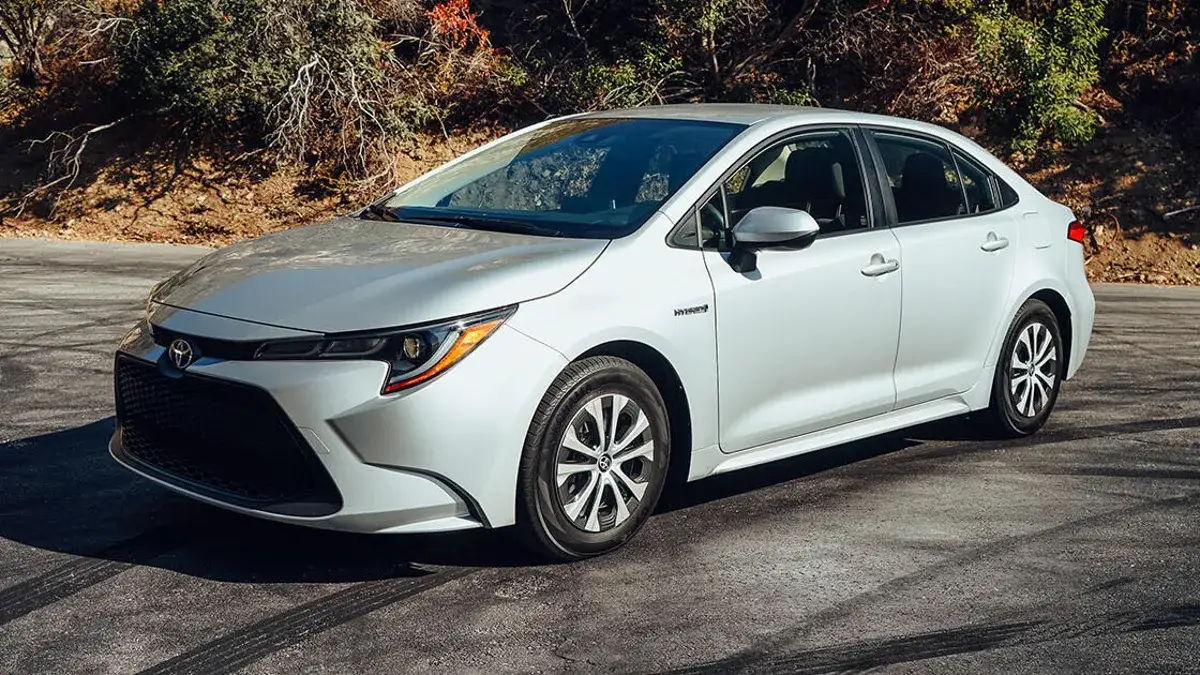
A perennial favorite for its reliability and fuel efficiency, the 2025 Toyota Corolla Hybrid continues to impress. This year’s model boasts an EPA-estimated combined fuel economy of up to 52 mpg, making it a fantastic choice for drivers seeking to save money at the pump. The Corolla Hybrid offers a comfortable ride and a surprisingly spacious interior for a compact car. While acceleration might not be neck-breaking, it provides a smooth and predictable driving experience that’s perfect for everyday commutes and errands. Additionally, the Corolla Hybrid comes in various trim levels, allowing you to find the perfect balance of features and affordability. If you’re looking for a fuel-efficient and practical sedan that won’t break the bank, the Toyota Corolla Hybrid is a strong contender.
Also, read: Ten best luxury cars in the world
How can we improve fuel economy?
You can improve your fuel economy in several ways. The best place to start is by choosing a car, like the ones on this list, that is already capable of achieving a high mpg figure. You should also consider choosing a car with a mild hybrid or full-hybrid powertrain for great fuel economy. However, it’s also important to remember that when you’re out on the road, there are some tips and tricks that you can implement yourself.
- Smooth driving: Avoid harsh acceleration and braking and drive at a consistent speed. By doing so, you put less strain on the engine and use less fuel. Harsh acceleration results in the engine having to burn through more fuel to generate more power. Harsh braking also dissipates kinetic energy as waste heat. Taking it smooth and steady out on the roads means that you will benefit from improved fuel efficiency.
- Avoid short trips: Short trips in the car aren’t great if you are looking to improve your fuel economy. This is because traditional combustion engines need time to heat up and get fuel pumping around the engine. Taking the car on a journey that would take you five or ten minutes to walk is not the way to increase your fuel efficiency.
- Regular maintenance: Keeping your car regularly maintained is another thing that you can do. Regular oil changes, filter replacements, and servicing will contribute to better fuel efficiency. For example, a clogged air filter restricts airflow to the engine, causing it to work harder and consume more fuel. Additionally, ensuring your tyres are at the correct air pressure level is another way to improve fuel efficiency. As you naturally lose PSI by around one or two units per month, it’s important to carry out regular pressure checks. If your tire is underinflated by 20%, fuel consumption increases by 4%.
- Reduce unnecessary weight: Extra weight in a car increases your fuel consumption. This is because the engine needs to work harder to move more weight, especially during acceleration. It’s therefore a good idea to remove any unnecessary weight from your car. For example, driving around with unloaded roof racks increases your fuel consumption, so if you’re not using them, take them off the car.
- Use cruise control: Many modern cars are fitted with cruise control. Using cruise control can be a good way to increase your fuel economy, as you can set the car to travel at a consistent and steady speed. If you do a lot of motorway driving, you should look to take advantage of your cruise control system.
- Use your air conditioning sparingly: Air conditioning can increase fuel consumption, especially when traveling at higher speeds. Use it sparingly, and consider opening windows when driving at lower speeds instead of using the air conditioner. The air conditioning system places an additional load on the engine, especially during hot weather. Minimizing its use reduces the engine’s workload and conserves fuel.
Also, read: Top Ten Tips for Driving Safely in Winter Weather
FAQs: Fuel-Efficient cars in the World 2025
Q. Are all the cars on the list electric vehicles (EVs)?
No, the list includes both EVs and plug-in hybrid electric vehicles (PHEVs). While EVs offer zero tailpipe emissions, PHEVs combine an electric motor with a gasoline engine, allowing for electric driving for shorter trips and gas engine use for longer journeys.
Q. How much can I save on fuel costs with a car on this list?
The exact savings will depend on your current gas mileage, gas prices in your area, and how much you drive. However, EVs and PHEVs can significantly reduce your fuel costs compared to traditional gasoline-powered cars.
Also, read: Top Ten Battery Technologies That Will Revolutionize the Automotive Industry
Q. What are the charging times for the electric vehicles on this list?
Charging times will vary depending on the car’s battery size and the type of charger you use. Level 2 chargers, common at home and public stations, can fully charge most EVs in several hours, while DC fast chargers can add a significant amount of range in under an hour.
Q. Are there any government incentives for buying a fuel-efficient car?
Many countries and regions offer tax credits or rebates for purchasing EVs or PHEVs. It’s a good idea to research any available incentives in your area before making a purchase.
Q. What other factors should I consider besides fuel efficiency when choosing a car?
Important factors include your budget, driving needs (cargo space, passenger capacity), desired features (technology, safety), and preferred body style (sedan, SUV, hatchback).
Also, read: Ten tips for improving your car’s fuel economy
Q. Where can I find more information about the cars on this list?
You can visit the official websites of the car manufacturers or research car review sites for detailed information on each car’s specifications, features, and pricing.
Conclusion: The Final Words
As we move into 2025, the demand for fuel-efficient cars continues to grow, driven by rising fuel prices, environmental concerns, and advancements in automotive technology. The vehicles listed in the “Top 10 Most Fuel-Efficient Cars in the World 2025” showcase the impressive strides the automotive industry has made in offering consumers environmentally friendly, cost-effective, and high-performance options. Whether through hybrid, electric, or advanced internal combustion engine technologies, these cars not only reduce fuel consumption but also minimize emissions, supporting the global push towards sustainability. Among them, we see a trend toward lighter, more aerodynamic designs, coupled with cutting-edge powertrains that deliver optimal fuel efficiency without compromising on performance.
Many of these models are also equipped with features that enhance the driving experience, such as advanced driver-assistance systems, luxurious interiors, and seamless connectivity. However, as fuel prices remain volatile and environmental regulations tighten, the focus on fuel efficiency is expected to intensify. Consumers are becoming increasingly aware of the long-term savings and environmental benefits of investing in such vehicles. Ultimately, the cars featured in this list offer a glimpse into the future of driving—where fuel efficiency and sustainability are no longer optional but essential. For those looking to make an informed choice in 2025, opting for one of these top fuel-efficient cars is a step toward a greener, more economical future on the road.
Also, read: 10 things to consider when buying a hybrid car in 2025

